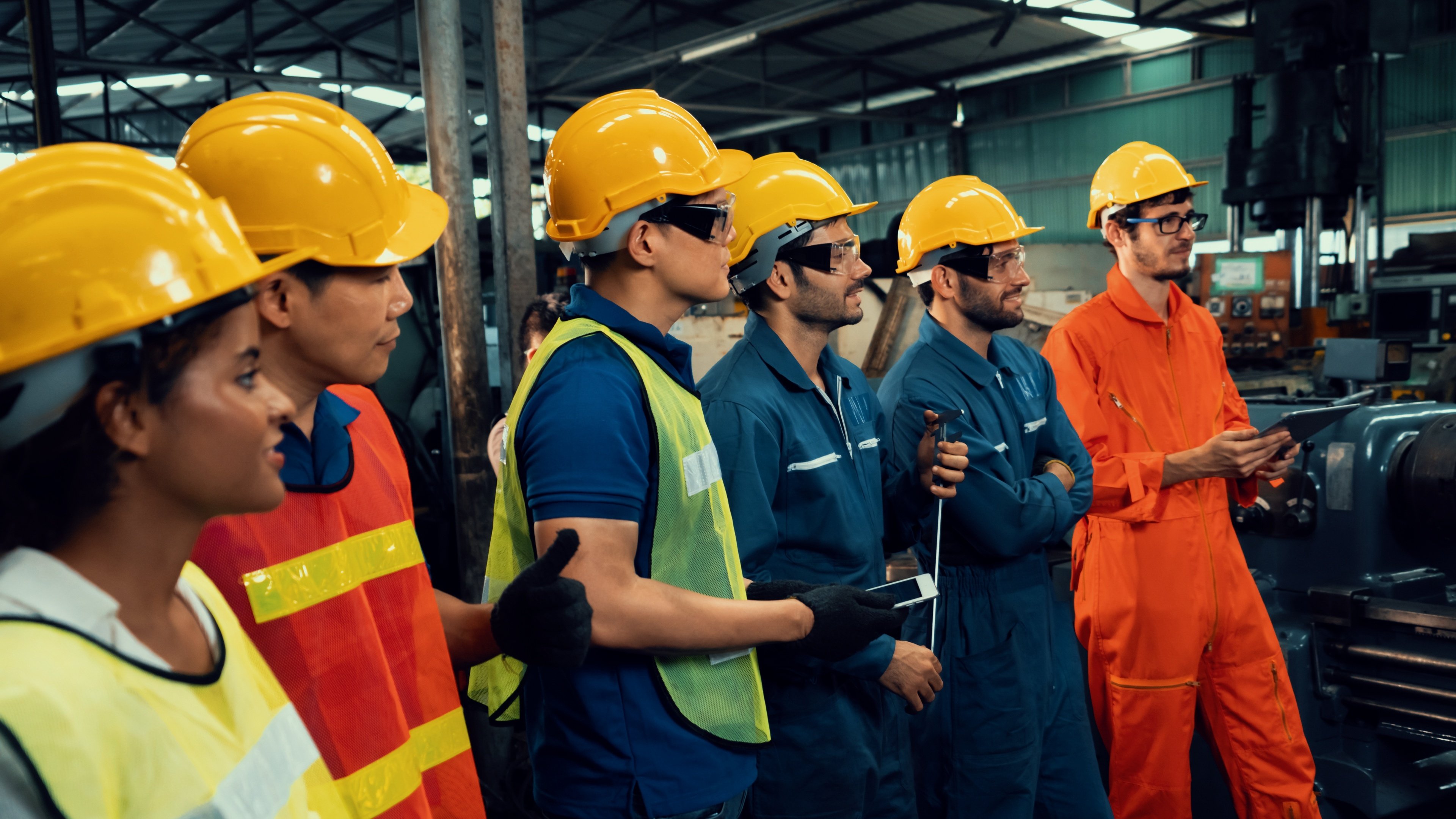In the current fast-paced work environment, safety training has become a vital aspect of any industry. Whether you work in manufacturing, healthcare, hospitality, or any other field, ensuring the well-being of your workforce should be a top priority.
Standard safety training courses are undoubtedly valuable, providing essential knowledge and best practices. However, they may not always address the unique challenges and hazards that your specific workplace entails. That's where a custom site safety training course comes into play, transforming the way you approach safety and revolutionizing your work.
A proper site safety training course prepares every employee, experienced or brand new, for their specific job site and every risk that can be encountered there. Instead of a standardized course meant to only give best practices, a custom course will highlight the unique conditions present in your unique work environment.
Training should not be an afterthought. Properly trained employees are more efficient, less prone to injuries, and save costs. “A multidimensional approach including training, coaching, injury reviews and maintenance protocols increases the chance of better outcomes in terms of work-related musculoskeletal disorders” was found to be a conclusion of this 2021 meta-analysis on studies of the healthcare industry by Asuque, Tighe, and Bradshaw. Implementing customized site safety training keeps employees safe from the start of employment to the very end.
Improving Workplace Safety with Risk Identification
The first step in creating a plan for your specific workplace is identifying the lingering risks that are present. Identifying current and potential workplace hazards serves as both a learning tool and a refresher for current employees and these risks will become the base that you build your training around. By understanding the workplace you can begin working towards creating a safer one.
Inadequate safety training that does not address the potential for employee risk leads to increased injury and reduced productivity. Certain industries, such as construction, are especially prone to this with the nature of changing crews and staff. In 2020, construction workers reached a five-year high for the number of recorded injuries according to the Bureau of Labor Statistics.
Though general industry standards exist, alongside OSHA training, every worksite presents its own unique risks which must be addressed. An operations manual for a warehouse of 10 employees manufacturing clothing will look drastically different than a warehouse canning sodas. Your safety training should be as aware of the differences in these environments as your operations are.

Outside of construction, manufacturing and office workspaces can have their own unique challenges appear as well. Navigating cluttered or complex environments like those found in a busy office with computer cords, moving coworkers, and various layouts, operating machinery like company cars, or manipulating hazardous materials in a lab environment are all activities that can pose a risk to workers who have not received proper training.
Inadequate safety training can lead to increased risk of injury, reduced effectiveness in implemented safety measures, such as improper use of fall protection, and an increase in OSHA recordables. Employee health and safety is critical to well-run workplaces and safety training is the first step to achieving it.

Why Choose Site-Specific Safety Training?
Generic training requirements, OSHA-authorized or otherwise, are the backbone of any training program. Industries implement these basic standards so that workplaces can start with the same base knowledge. But, to maximize employee safety, these standards should just be a starting point.
Site-specific safety programs that exceed OSHA standards and are capable of addressing site-specific hazards are capable of many things. Increased productivity, reduced costs, and better employee health are just some of the benefits you can receive. Occupational safety training that addresses the specific problems found in a workplace has massive value.
Failing to address site-specific safety hazards can lead to increased musculoskeletal disorders and discomfort for employees. Over 20% of injuries in construction result from MSDs according to CPWR. Reducing the rate of injuries with training will increase employee health and productivity. Intervention methods and education on the risks have proven highly effective in reducing the rate of MSDs across industries. Review our case study library here to find out more.
Considering the needs of your site can also increase engagement with employees. A site safety coordinator can increase employee buy-in by showing direct results and connections to your worksite. Onsite examples for your safety training programs can make hours of training have a lasting impact on employees and foster a culture of safety.
If you are considering the impact of MSDs on your workforce, contact an expert to conduct an assessment. You may be losing more than just time to these hidden discomforts.

Choosing Your Training Program
When deciding on your training program, your employees should be your first consideration. Different workers will need different courses and learn more effectively from different types of programs. Programs like the OSHA Outreach training offer multiple levels of training from basic to advanced. Consider this approach when choosing a safety training program.
There can be value in instructor-led courses, showcasing past examples with video elements and text. However, this may not resonate with all workers. Practical training with walkthroughs, demonstrations, and other in-person elements can help workers by showing them exactly what they can be expected to see. When analyzing classroom training versus practical work environment training, classrooms were found to be "not significant for outcomes in terms of knowledge and showed a decreasing efficacy for attitudes and beliefs". Creating a compelling story that keeps employees' attention and helps them retain the information with real workplace examples is incredibly important to the success of any program.
A training program needs to understand what employees' and supervisors' needs are and effectively address them. Consider creating a FAQ with feedback from current employees to find what pain points are present in your organization. This can then be translated to your training program to have direct results on new hires and in retraining.
New Technology in Training
As technology adapts and evolves your training should too. Online training can be used to save employee time and energy, in addition to allowing training to be revisited at any time. When incorporated with onsite training, online courses can be both adaptive and compliant. The ability to offer courses in English, Spanish, and other languages allows for wider candidate ranges as well.
New programs have been introduced by the construction industry across the country to assist in training. Generalized training is recorded in New York with the SST Card, saving time and effort in retraining and making space for a site safety plan at every construction site. SST courses maintain compliance simply and similar programs have begun development in other areas.
Technology solutions also allow for awareness and immediate feedback on programs from experts. Experienced ergonomic and Industrial Sports Medicine™ professionals can provide feedback on engagement with training materials and training effectiveness. Working with a team allows supervisors like construction superintendents to focus on the project without additional stress from employee training and safety.

Incorporating a custom site safety training course into your work environment can bring about a transformative shift in the way you approach safety. By recognizing the unique hazards of your workplace and tailoring training to address them, you empower your employees with the knowledge and confidence needed to navigate their work tasks safely.
Now is the time to seriously invest in employee health as OSHA has just announced a new National Emphasis program addressing workplace hazards. Focusing on retail, warehouse, and distribution facilities, detailed inspections will address high-risk common workplace hazards. A comprehensive, professionally made safety plan addresses existing and updated regulations so you don’t have to worry.
As regulations continue to evolve and workplaces change, investing in custom safety training is an investment in your employees' well-being and the success of your organization as a whole. Embrace the power of customization and revolutionize your work by putting safety at the forefront of your company's values. Learn more about implementing and creating your own site safety course with Briotix Health below.
